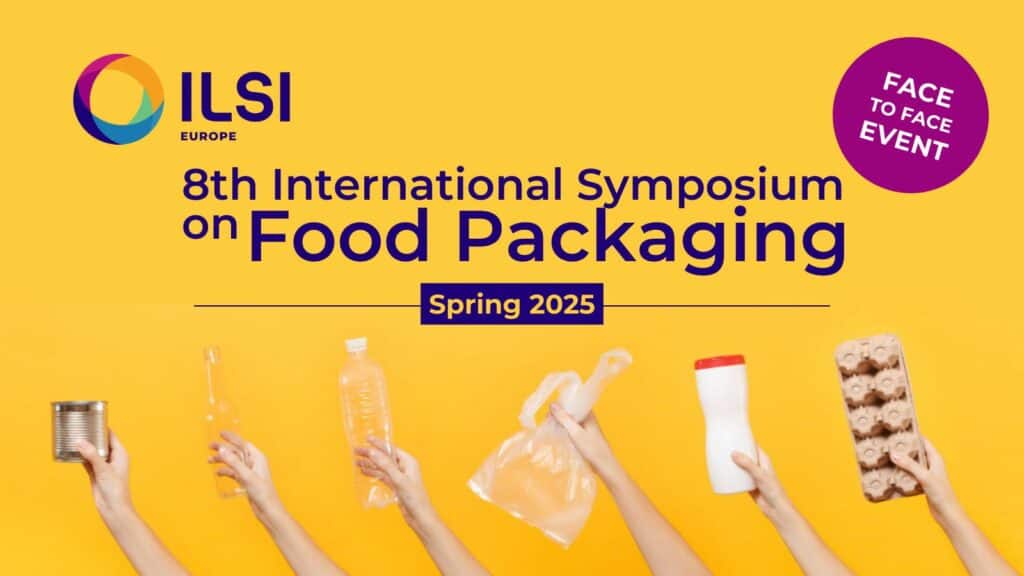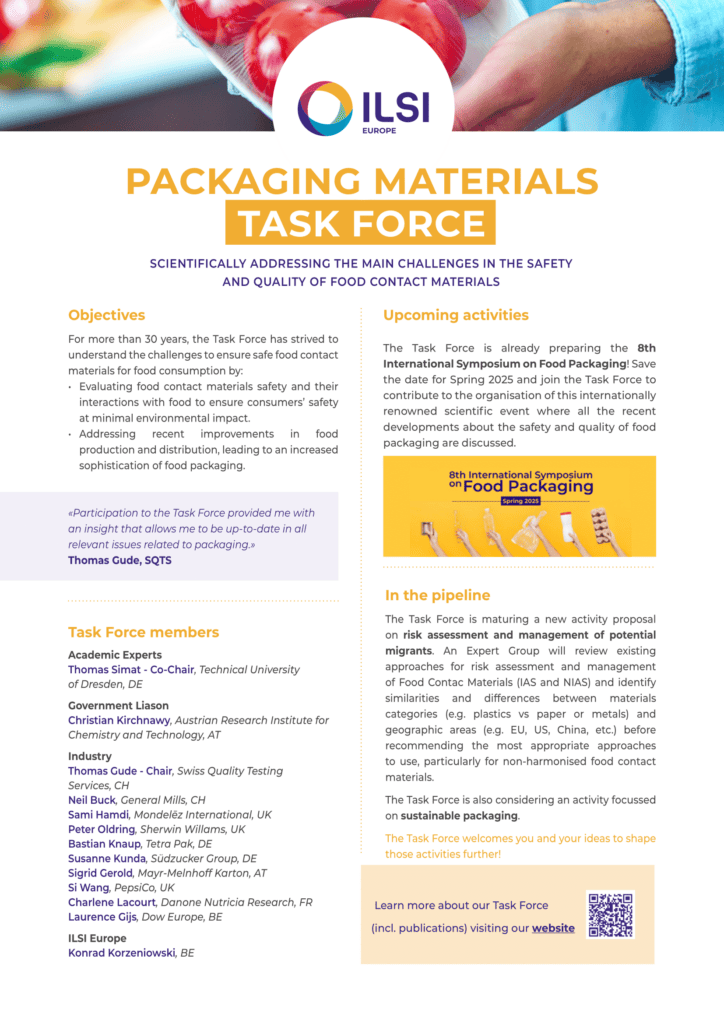Scientifically addressing the main challenges in the safety and quality of food contact materials
Task Force Information
Objectives
For more than 30 years, the Task Force has strived to understand the challenges to ensure safe food contact materials for food consumption by:
- Evaluating food contact materials safety and their interactions with food to ensure consumers’ safety at minimal environmental impact.
- Addressing recent improvements in food production and distribution, leading to an increased sophistication of food packaging.
Task Force Members
| Thomas Gude | ETH Zurich | Lecturer in Food Safety and Analysis | CH |
| Christina Nerin* | University of Zaragoza | Full Professor | ES |
| Christian Kirchnawy* | Austrian Research Institute for Chemistry and Technology | Team Leader | AT |
| Neil Buck | General Mills | Corporate Toxicologist | CH |
| Sigrid Gerold | Mayr-Melnhof Karton | Food Contact Specialist | AT |
| Sami Hamdi | Mondelēz International | Senior Associate Principal Scientist | UK |
| Charlène Lacourt - Chair | Danone Nutricia Research | Toxicologist-Risk Assessor | FR |
| Bastian Knaup | Tetra Pak | Manager Advanced Analytics and Chemical Safety | DE |
| Peter OIdring | Sherwin Williams | Regulatory Affairs Manager | UK |
| Susanne Kunda | Südzucker Group | Manager Product Safety | DE |
| Laurence Gijs | Dow Europe | EHS&S Regulatory Compliance Manager | DE |
| Tina Richter | Swiss Quality testing Services | Laboratory Manager Food Contact Materials | CH |
| Si Wang | PepsiCo International | Senior Scientist in Scientific Affairs | UK |
| Konrad Korzeniowski | ILSI Europe | Scientific Project Manager | BE |
* Scientific Advisors
Contact Information
For more detailed information, please contact Konrad Korzeniowski at kkorzeniowski@ilsieurope.be
Activity Overview
In the pipeline
- Risk assessment and management of potential migrants
An Expert Group will review existing approaches for risk assessment and management of Food Contac Materials (IAS and NIAS) and identify similarities and differences between materials categories (e.g. plastics vs paper or metals) and geographic areas (e.g. EU, US, China, etc.) before recommending the most appropriate approaches to use, particularly for non harmonised food contact materials.
- Sustainable packaging
More information to come soon...
Expert Groups
Coming soon...
Publications
Z to A
Value and limitation of in vitro bioassays to support the application of the threshold of toxicological concern to prioritise unidentified chemicals in food contact materials
2019
Recycling of Plastics for Food Contact Use
1997
Packaging Technology and Science. 1997;10(5);281-289.
Packaging Materials 9: Multilayer Packaging for Food and Beverages
2011
ILSI Europe Report Series. 2011:1-43. Commissioned by the Packaging Materials Task Force.
Packaging Materials 8: Printing Inks for Food Packaging Composition and Properties of Printing Inks
2011
ILSI Europe Report Series. 2011:1-32.
Packaging Materials 7: Metal Packaging for Foodstuffs
2007
The present report is the seventh in the report series on food packaging materials, which was commissioned by the ILSI Europe Packaging Materials Task Force.


